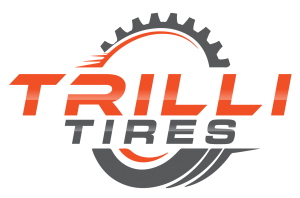Ensuring your vehicle’s brakes are in optimal condition is crucial for your safety on the road. Brake service is a routine maintenance task that involves inspecting, repairing, and replacing components to maintain the effectiveness and reliability of your brakes. In this guide, we’ll delve into what brake service includes, why it’s essential, and what to expect during the process.
Importance of Brake Service
- Safety: Properly functioning brakes are critical for stopping your vehicle safely and quickly, especially in emergency situations.
- Performance: Regular brake service ensures smooth braking and optimal performance, preventing issues like brake fade or loss of stopping power.
- Longevity: Maintaining your brakes prolongs the lifespan of brake components and prevents costly repairs down the line.
Signs Your Brakes Need Service
- Squealing or grinding noises when braking
- Vibrations or pulsations felt through the brake pedal
- Longer stopping distances
- Brake warning light illuminated on the dashboard
- Spongy or soft brake pedal feel
- Uneven wear on brake pads or discs
Components Checked and Serviced
- Brake Pads: Inspected for wear and replaced if necessary.
- Brake Discs/Rotors: Checked for warping, scoring, or uneven wear. Machining or replacement may be required.
- Brake Calipers: Inspected for leaks, corrosion, and proper functioning. Replaced if damaged or worn.
- Brake Lines: Checked for leaks, corrosion, and damage. Replaced if necessary.
- Brake Fluid: Inspected for contamination, moisture, and proper levels. Flushed and replaced if needed.
- Brake Hardware: Lubricated and inspected for proper operation.
- Brake System: Checked for leaks, proper hydraulic pressure, and functionality.
The Procedure
- Inspection: A visual and sometimes mechanical inspection of brake components to assess their condition.
- Replacement: Worn or damaged components are replaced with new ones, such as brake pads, discs, or callipers.
- Adjustment: Brake callipers, pads, and other components may be adjusted to ensure proper operation and alignment.
- Testing: The brake system is tested for effectiveness, noise, and overall performance to ensure everything functions correctly.
- Maintenance: Recommendations for ongoing maintenance and care may be provided to keep the brakes in top condition.
Frequency of Brake Service
- Brake service intervals vary depending on driving habits, vehicle type, and manufacturer recommendations.
- As a general guideline, brakes should be inspected at least once a year or every 12,000 to 15,000 miles.
DIY vs. Professional Brake Service
While some basic brake maintenance tasks can be performed at home, such as changing brake pads, a professional brake service ensures thorough inspection and proper diagnosis of any underlying issues.
DIY attempts without proper knowledge and tools can lead to safety hazards and costly mistakes.
Brake service is a vital aspect of vehicle maintenance that ensures the safety, performance, and longevity of your vehicle’s braking system. By understanding what’s involved in brake service, recognizing signs of brake wear, and adhering to recommended maintenance intervals, you can keep your brakes in top condition and enjoy peace of mind on the road.
For professional wheel alignment and comprehensive brake service in Richmond Hill, Markham, Vaughan, and the rest of the Greater Toronto Area (GTA), contact TrilliTires today. Ensure your vehicle’s safety and performance with our expert services.
